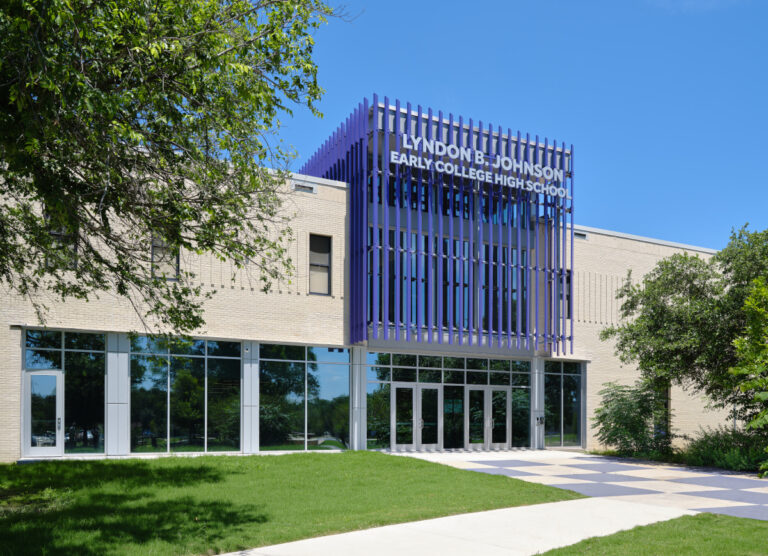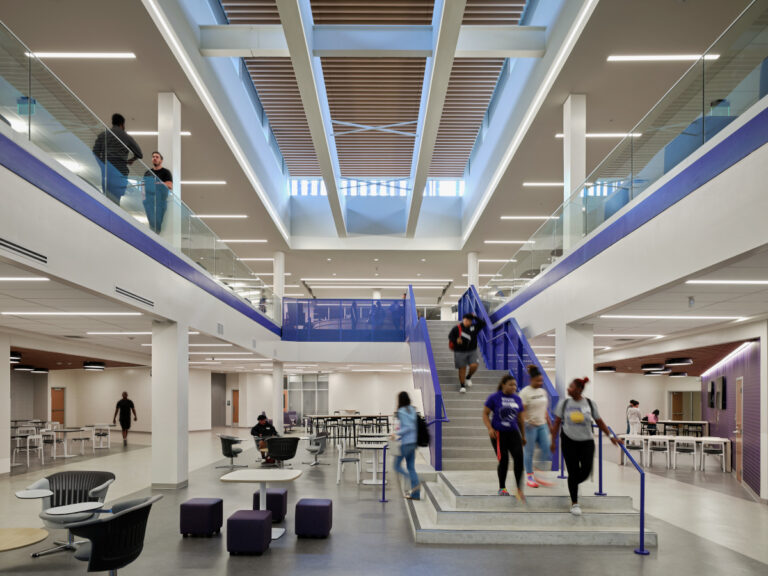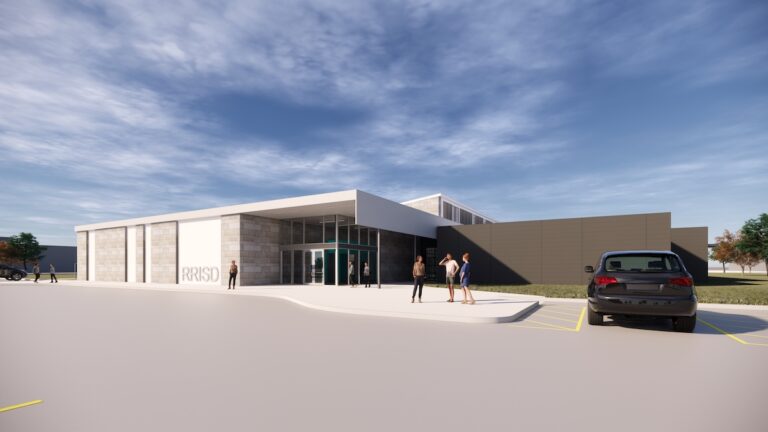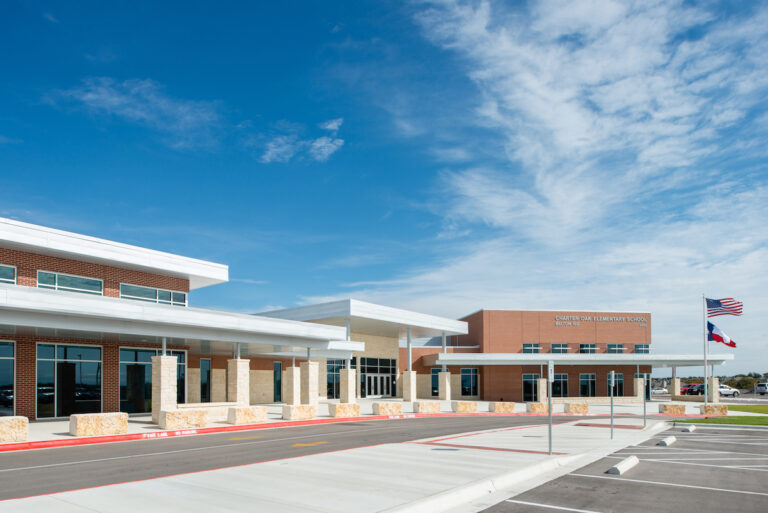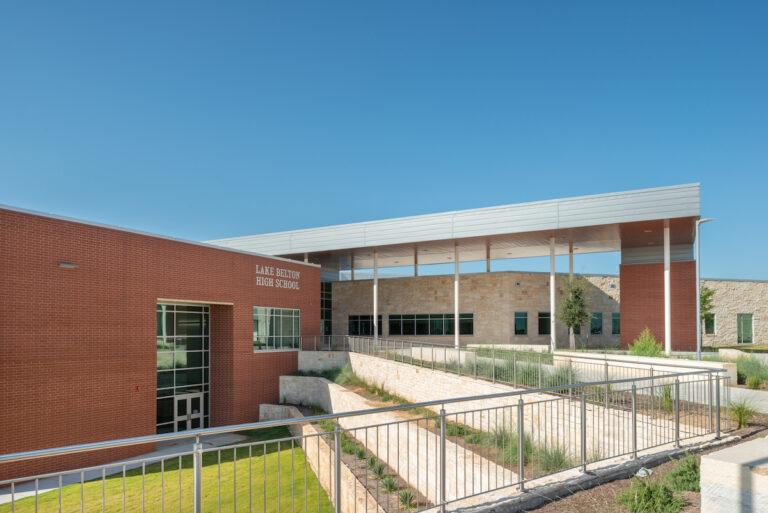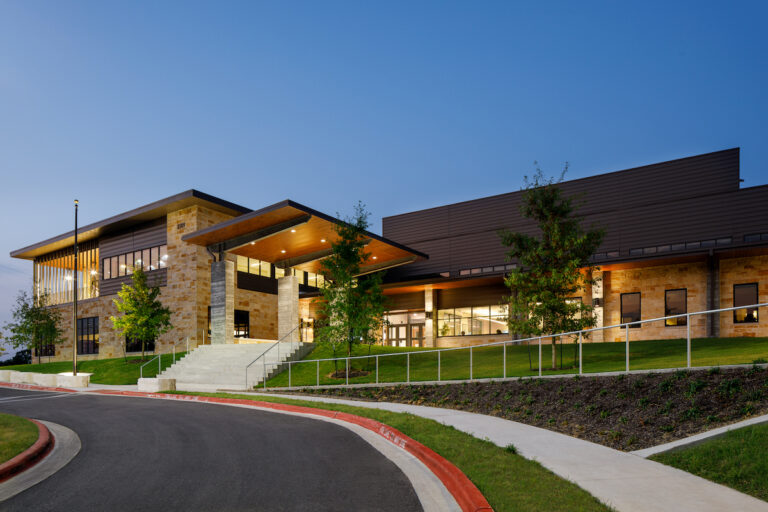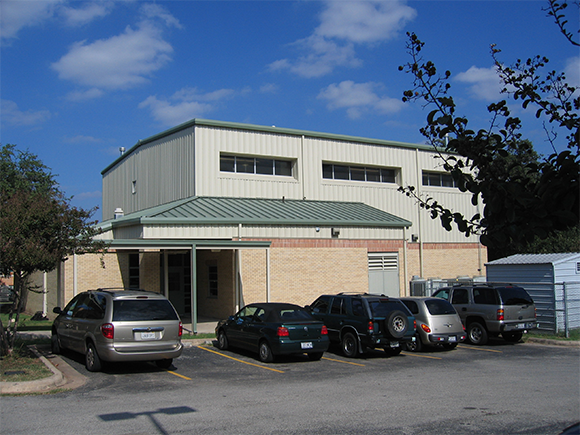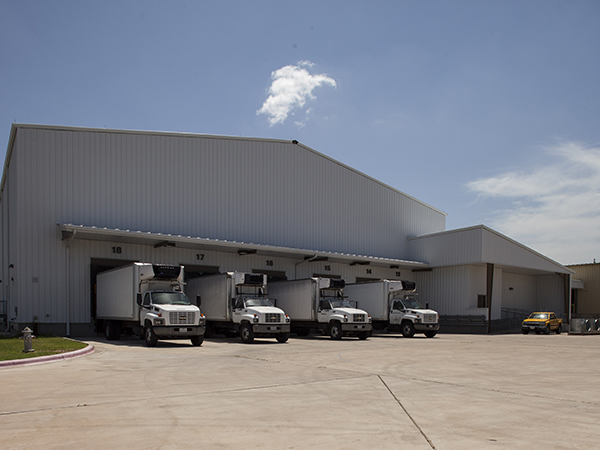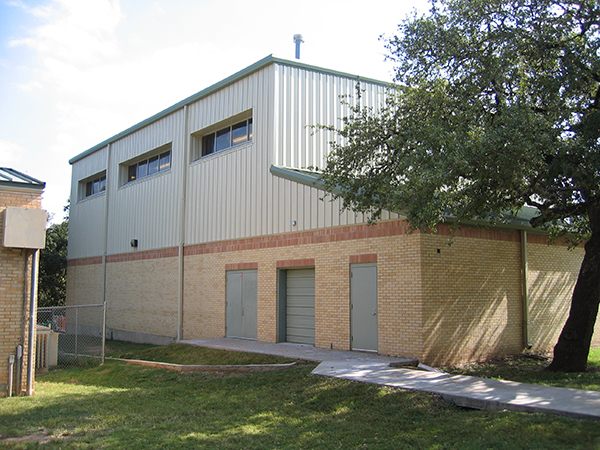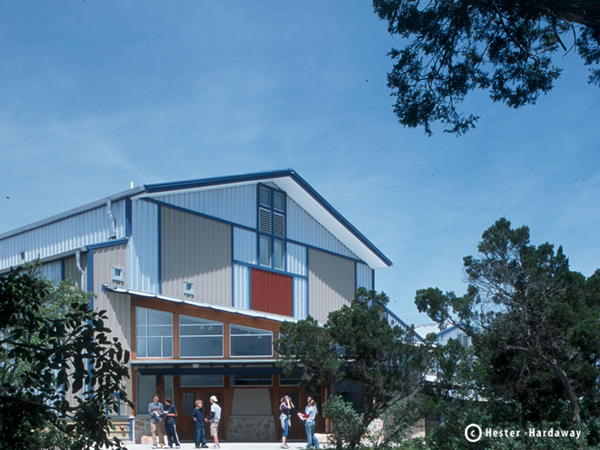The LBJ Early College High School was originally built in 1972 and has undergone numerous renovations in the decades since then. The 2-story building is 56,000 SF and serves nearly 800 students in grades 9-12.
This project involved renovating an existing high school building to optimize natural light and create a feeling of openness for improved aesthetics and occupant wellbeing. To provide for the increased natural lighting as designed, a portion of the exterior of the building was replaced with a curtainwall, a portion of the 2nd floor was removed to add height to the entryway, and the roof above the new curtainwall was raised to add clerestory windows.
The team began with a thorough examination of the existing structure to assess its strength and capacities. The second floor’s structural system primarily consisted of continuous beams, which required modifications to handle higher moments at columns. Retrofitting and additional support were implemented where necessary, with close coordination with the architect to integrate MEP systems seamlessly.
A major challenge was establishing connections at the ends of beams while incorporating the required reinforcement. Limited space for anchors due to column dimensions required precise calculations and adjustments. The team also had to work around existing rebar that needed preservation.
Despite challenges, the structural engineering team maintained close collaboration with the architect and contractor to adapt to field conditions. Some of the existing structure was successfully repurposed, reducing the cost of labor and materials while achieving the architect’s vision. The curtainwall was skillfully attached to existing beams, and a cantilevered metal panel screen shade system was integrated, avoiding the need for additional columns below.
This project showcases the successful fusion of architectural vision and structural engineering expertise. It addresses challenges related to light, space, and structural reinforcement, and the importance of collaboration between architectural and engineering teams. The ability to reuse existing elements promotes sustainability, while collaborative efforts ensured project success.
Location: Austin, TX
Size: 14,700 SF
Architect: Perkins & Will

